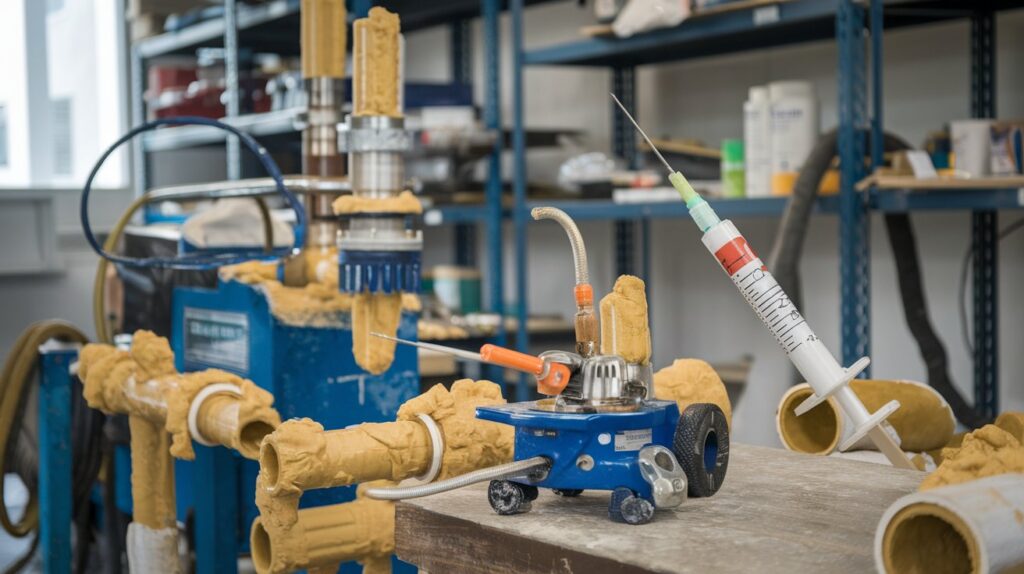Selecting the correct insulation is essential because it greatly contributes to energy efficiency and comfort in a house or building. Whether you’re working on a home improvement project in California, Texas, or anywhere across the United States, understanding your insulation options is crucial for long-term success. Since there are multiple injection insulation varieties to choose from, it is important to be aware of how they differ.
This guide explains how to choose the best type depending on the material properties, price, and environmental impact. When choosing between injection insulation options, understanding each material’s unique characteristics will help you make an informed decision that benefits both your comfort and your wallet.
Understanding Injection Insulation
Injection insulation involves injecting material into your walls or cavity spaces to improve thermal performance. This technique is effective because it covers hard-to-reach areas without major renovations, preventing heat and energy loss. Knowing the various materials used in this process can be helpful when deciding which option is best for your application.
Types of Injection Insulation
Different materials cater to different needs and preferences. There are three basic types: foam, cellulose, and fiberglass. Each has unique benefits and drawbacks that should be evaluated to best fit the needs of a given situation.
Foam Insulation
Foam insulation, generally made of polyurethane, has a high thermal resistance. This comprehensive coverage allows it to fill voids completely, making spaces virtually airtight. It’s perfect if you’re looking for the best energy efficiency. However, it may be more expensive than other options and usually requires professional installation.
Cellulose Insulation
Cellulose insulation is an eco-friendly option made of recycled paper products. Its dense nature provides decent sound and thermal insulation. This choice is frequently less expensive and environmentally friendly. The drawback is that it may need maintenance periodically to prevent settling over time. According to the U.S. Department of Energy, cellulose insulation can be an effective and sustainable choice for many homeowners looking to improve their home’s energy efficiency.
Fiberglass Insulation
Fiberglass—made up of small strands of glass—is an economical option with good thermal performance. Its moisture and fire-resistant features are also favorable for safety purposes. It may not be as airtight as foam, but it’s much more affordable, which makes it appealing to many homeowners.
Factors to Consider
Several factors affect your choice of insulation type. Considering aspects such as climate, cost, and installation difficulty provides guidance when making a decision.
Climate and Energy Efficiency
One of the biggest factors when determining insulation needs is the local climate. High thermal resistance materials are required in regions with extreme temperatures. Conversely, moderate climate regions may focus more on moisture prevention. Understanding these requirements can help in achieving optimal energy efficiency.
Budget and Cost
The choice of insulation material is often influenced by cost. Foam insulation is the most effective, but it can be an expensive option; fiberglass is more affordable. By weighing the cost against potential long-term savings in your energy bill, you can make a more informed choice.
Environmental Impact
Sustainability is more crucial in today’s economy than ever before. Cellulose insulation offers an eco-friendly solution, made from recycled materials. Balancing the environmental impact of each option can help prioritize insulation choices that align with ecological objectives.
Installation Complexity
Different insulation types have varying levels of installation complexity. Foam requires professional equipment and expertise, which may increase costs. In comparison, installation can be simpler for fiberglass and cellulose and can even be a DIY project in some cases. Considering installation requirements can help avoid unexpected expenses.
Long-Term Performance
Insulation material should be evaluated for its long-term durability and performance. Foam can last decades with minimal maintenance; cellulose might need occasional touch-ups. Fiberglass, while less airtight than foam, offers reliable performance at a lower cost. Understanding these differences will help you select a material that meets your long-term needs.
Making the Decision
Selecting the appropriate insulation system involves balancing multiple factors. The decision will be driven by individual priorities and project requirements. Researching the topic thoroughly and consulting professionals will provide valuable insights for your specific situation.
Conclusion
Choosing the right injection insulation type requires careful consideration of material properties, cost, environmental impact, and installation complexity. Understanding these factors will help you make informed decisions to improve comfort and energy efficiency. Whether prioritizing sustainability, budget considerations, or performance, the insulation choice you make can significantly impact your home’s overall efficiency and comfort.

